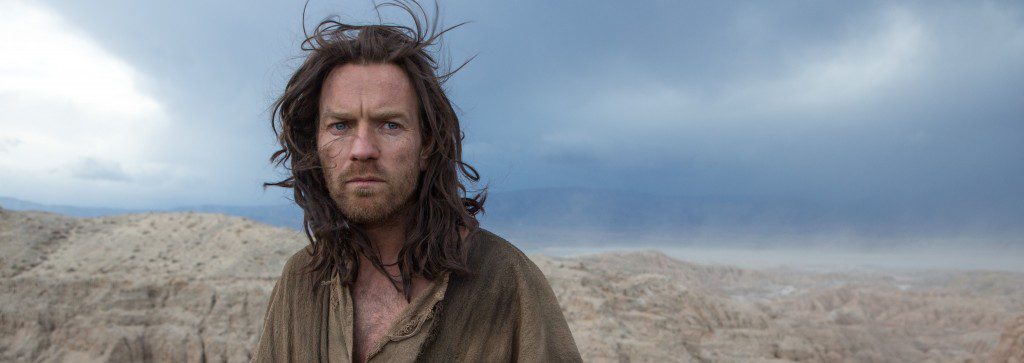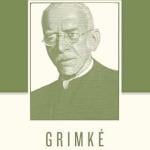Last Days in the Desert, the low-budget film that stars Ewan McGregor as both Jesus and Satan, had its premiere at the Sundance Film Festival two nights ago, and the reviews so far have been pretty positive. The filmmakers were also there to discuss the film. What follows is a round-up of reviews and interviews from the festival.
First, a snippet from the post-screening Q&A.
The New York Daily News has a couple of interesting soundbites from McGregor and his director, who spoke to the audience after the film’s premiere:
“It’s an extraordinary situation to be playing two roles in any film, and its quite daunting when one of them’s Jesus,” he told the crowd at the Eccles theater. “I had to get over the idea I was playing him … as soon as I could look at the man, it was easier. But when we started filming I’d realized I’d spent no time thinking about playing the Devil. He seemed to be much easier to play!”
Director Rodrigo Garcia followed by saying that although he envisioned “Last Days” as being about several things, including father and son issues, he joked, “You can talk about themes and say a movie is about A B or C, but if Jesus is in your movie, your movie is about Jesus!”
Next, the interviews.
McGregor told Entertainment Weekly the film, which takes place during the 40 days when Jesus was tempted by Satan in the wilderness, shouldn’t be lumped in with recent so-called “faith-based” films, and he makes an interesting — and even kind of startling — claim about one of the key differences between Jesus and Satan:
In one of Last Days’ most compelling sequences, the holy man hits pause on his adversarial relationship with the devil to ask what God looks like and whether or not he has a face.
“It’s maybe the best scene I’ve ever played in my life,” says McGregor. “Jesus! The depth of the questioning, the twists and turns, the sort of one-upmanship between Jesus and the devil, it’s such a wonderful scene! Lucifer was a fallen angel. He’s been with God. He knows God. Jesus has not had that experience.”
Some Christians may bristle at the suggestion that Jesus had not “been with God” prior to his incarnation. Certainly that flies in the face of the opening statement in John’s gospel, which says that Jesus “was with God in the beginning.” But think about it from another perspective: traditional Christian theology has always held that Jesus has two natures, one divine and one human, and Paul talks in his letter to the Philippians about Jesus “emptying” himself to become human. Luke’s gospel also talks about Jesus growing “in wisdom and stature” during his adolescence, and perhaps beyond. So on a human level, Jesus was not necessarily all that different from the rest of us: he had been born, he had grown up, he was still learning things, and he had not yet died and experienced the afterlife the way that humans do.
Speaking of adolescence, director Rodrigo Garcia also told Entertainment Weekly that he saw the Jesus of his movie as going through a sort of adolescent phase:
“In a way, I thought of this movie as the adolescence of Jesus,” Garcia says. “Of course he’s already 30 in my story, three years out from being crucified. But I always thought of it as an adolescence. He went out to the desert looking for something. He got things but not everything that he needed. And for me, it was almost as if he wanted to spend time with God, he had to spend time with people. That’s what was missing in his journey. A little human messiness.”
McGregor also spoke to Yahoo Movies about the challenge of playing the two main characters (the interview includes a spoiler which I am not quoting here):
Was it disorienting to go back and forth between the two characters?
No, not really, because I had my friend Nash [Edgerton] working with me on those scenes. I would just play to him, and I was getting something back; I wasn’t doing it to a piece of tape on a stand, and I wasn’t reading with a stand-in who’s not a very good actor.I think the demon was harder to get right. The takes that Rodrigo’s chosen managed to make it more subtle. Because there were some takes that were a bit over-the-top or angrier or vicious. I guess what’s more interesting is seeing these two men who look exactly the same.
The Devil almost seems like the other side of Jesus’ psyche more than an actual physical character.
I think the film is open to anybody’s interpretation, and I like that. But I played them as he’s the Devil and he’s Jesus. A lot of what the Devil is saying to Jesus is trying to create doubt and f—- with him, really. But that being said, I was never trying to suggest that this was just another sort of Jesus’s doubt. I always imagined that they really were two different people.
McGregor also spoke to a reporter for La Repubblica, which published the interview in Italian. (You can read the Google Translate version here.) And The Hollywood Reporter posted a brief video of Garcia, McGregor and co-star Tye Sheridan:
Now for the reviews, starting with the trades.
Justin Chang — who is himself a Christian, and who also hints at a spoiler towards the end of his review that I will not reveal here — in Variety:
Certain to elicit the full range of reactions from the faithful and the skeptical alike, “Last Days in the Desert” approaches the figure of Christ — or Yeshua, as he’s referred to here — with tremendous care and tact, yet also with a scrupulous focus on his humanity rather than his divinity. Some may well discern a connection with “The Last Temptation of Christ,” though there’s nothing here that even remotely approaches that film’s controversy-stirring elements. This is a hushed, austere and surpassingly gentle treatment of a brief chapter of Jesus’ life — probably too subdued and speculative for those inclined to find profundity in the self-glorifying “realism” of “The Passion of the Christ,” but a vastly more considered and spiritually probing picture in every respect.
Todd McCarthy at The Hollywood Reporter — who spills even more spoilers that I will not quote here — is less impressed by the film:
Garcia’s take, however beautiful physically, is intellectually opaque and creatively cautious, leaving the interested viewer, whether or not a believer, with much to wonder about but little to actually chew on. As this is decidedly not a film that could be successfully marketed to the Christian crowd that supports certain Jesus-related projects, it’s hard to see what the audience for this intellectual exercise might be.
Tim Grierson at Screen Daily:
A powerfully meditative experience that grapples with themes of faith, destiny, death, and fathers and sons, Last Days In The Desert possesses the attributes that have been the hallmark of writer-director Rodrigo García’s best films: It’s emotionally uncluttered while being narratively ambitious. A take-it-or-leave-it minimalist exercise in spiritual symbolism, this imagining of an encounter between Jesus and a struggling family can occasionally be too poetic and metaphoric for its own good. But Ewan McGregor’s dual performance as Jesus and his demonic tormenter ensures that Last Days In The Desert never loses track of its grace and humility.
Bilge Ebiri at New York magazine’s Vulture blog:
Jesus is looking for God, trying to find a way to communicate with Him. All he finds is an endless stretch of desert. Shot with aching beauty by Emmanuel Lubezki, however, that desert becomes something else. In the film’s early scenes, which alternate between intense close-ups and gorgeous wide-shots, the horizon feels unattainable. This is a landscape of inexpressible longing — for grace, for meaning, for some kind of connection. And Jesus is always set apart from it, a figure who does not belong. It’s even driving him mad: Early on, we see him laughing maniacally as he picks what look like thistles or twigs from his hair — this guy is not ready for a crown of thorns yet.
Jordan Hoffman at The Guardian:
Jesus got his idea of teaching through parable somewhere, so who’s to say he couldn’t find inspiration from his own life? Last Days in the Desert, starring Ewan McGregor as both Jesus and the shadowy personification of a taunting Satan, is a smart and beautiful meditation of fathers and sons (and the Father and Son) that is slow but never boring. Rodrigo Garcia’s quiet, patient film toggles between ambiguous dialogue and bluntly telegraphed messaging, but when you are playing these roles you can afford to go a little grand.
Alissa Wilkinson — who previously interviewed Garcia and McGregor for Christianity Today — caught the film a second time (her first on the big screen):
Second time around, and it was still stirring and haunting, even more because now Lubezki’s lovely meditative desert vistas were much bigger. But I was still struck by the smallness of the film, by which I mean, the modesty of it, which is kind of a ludicrous thing to say about a movie about Jesus, but also possibly the best thing you can see. A movie like that isn’t purporting to tell the greatest story ever told; it’s just giving you a tale that you can relate to, because you, too, are a human, with a body, who gets dusty and dirty and smelly, who makes rude noises and is tempted by desires and gets tired and hungry. I like that. And from the responses I’ve been hearing, other people did too.
And finally, a round-up of some relevant tweets, some pro and some con:
LAST DAYS IN THE DESERT: walked out. I don't care who shot it, life's too short for a (silly) Van Sant-esque wandering Jesus film. #Sundance
— david ehrlich (@davidehrlich) January 26, 2015
The last shot of LAST DAYS IN THE DESERT is this year's last shot of THE IMMIGRANT #Sundance
— Jordan Hoffman (@jhoffman) January 26, 2015
The final shot of #lastdaysinthedesert almost brought me to tears.
— Joshua Overbay (@joshuaoverbay) January 26, 2015
@sundancefest #Sundance2015 #LastDaysintheDesert seems to argue for doubt/questioning as THE ethical heuristic for living morally
— Drew Lewis (@lderweiws) January 26, 2015
Call me crazy and/or a heathen but I think Ewan McGregor and 'Last Days in the Desert' humanizes Satan as much as Jesus. #Sundance
— Jordan Zakarin (@jordanzakarin) January 26, 2015
@ThePlaylist but Ewan vs. Ewan as Jesus vs. The Devil and their considerations of human nature is often compelling. Wish it gave more though
— ThePlaylist (@ThePlaylist) January 26, 2015
The film has three more screenings to go. It does not yet have a distributor, nor to my knowledge has it been picked up by any other festivals yet, so I have no idea when those of us who are not at Sundance will get a chance to see the film.
January 29 update: A few more Sundance-based interviews have popped up.
Deseret News spoke to producer Bonnie Curtis:
“Last Days In the Desert” producer Bonnie Curtis is hoping her film will be able to unite audiences over a wide breadth of beliefs rather than a collective suspicion around religious extremism.
“Whether you’re religious or not, whether you believe or not, I think most people believe that this man walked on the earth,” Curtis said of Jesus. “The film doesn’t judge and it doesn’t force its opinion on you and that allows people to ask the big questions.” . . .
The spare dialogue, minimal special effects and sun-bleached landscape are all deliberate, Curtis said, to inspire thoughtful discussion rather than shock and awe.
“This is not ‘Exodus’ or ‘Noah,’” Curtis said. “The film breathes so there’s room for you to put yourself inside of it.”
While Curtis says director Rodrigo Garcia took strict measures not to preach any particular religious agenda in the film, she’s hoping the stripped-down style and simplicity of “Last Days” can help reverse some of the dissension people today feel over faith.
“For a lot of people, Jesus has been turned into an action figure. The shiny dressings we’ve put on what began as a simple story — maybe this film can speak to that,” Curtis said. “We’re trying to get people to talk in and around the subject of religion and just use the film as a starting point for divisiveness to lessen a bit.”
Billboard spoke to composers Danny Bensi and Saunder Jurriaans:
For the well-received film about Jesus’ 40 days in the wilderness, Bensi and Jurriaans spent two months working with cellos, violins, gongs, gamelan and meditation bowls.
“We always try to get as much information as we can before we start, and Rodrigo started by saying ‘Let me tell you what I don’t want,” Bensi says of the director. “I don’t want a Hollywood orchestra and I don’t want religious music or choirs. Then he [said] I like violins and I like Vivaldi, and he referenced other obscure Renaissance composers like Paganini. We talked about minimalism and small ensembles and he said ‘Yes! Yes!'”
Jurriaans said they opted for close-miked strings to produce textures to allow the sound design to breathe, avoiding any long, droning tones. “Each cue is its own piece of music,” he noted.
And finally — for now — a few more interviews with McGregor:
Cineplex posted an interview with the actor, parts of which sound suspiciously similar to the post-screening Q&A that I quoted above. In any case, here’s an excerpt:
How did playing both roles work logistically?
The truth is, I couldn’t have done it without my friend Nash Edgerton. Nash and I have worked together for years, since 1999 when we met on Moulin Rouge. We’ve worked together on Star Wars Episodes II and III and many films since then.
Nash is a great stuntman and he’s been my stunt double on many films. He’s a filmmaker and a stunt coordinator, and we had him organize and coordinate our stunts on the cliff [in one scene] because there’s nobody you can trust more to make that safe.
But also, because he was there, I asked him if he would mind playing opposite me when I was playing the scenes with myself. So Nash learned both parts, and I learned both parts, and we would shoot the scene one way, and then we would swap positions and we would shoot the scene the second way.
Nash was obviously watching me, [and] when we swapped around I realized that he was playing the part that I had just shot with the same rhythms and flow that I had just been doing it with. So I was really able to play opposite myself because he was very accurate.
Vanity Fair talked to McGregor about losing weight for the role, etc.:
And the Italian website Coming Soon posted a red-carpet interview with him.
February 4 update: More reviews and interviews are rolling in.
The Associated Press spoke to Garcia (as well as McGregor and Glenn Kiser, the latter of whom moderated a panel on the film’s use of sound):
“The desert is a big setting, but the story is super interpersonal about these relationships,” Garcia said. “In some ways it is a kitchen sink drama, even if one of the dads is God.”
Garcia thought of shooting in Israel, but for various reasons, including costs, it just wasn’t going to be feasible for the production. “I didn’t want it to look like an American western desert, the way Colorado and Utah look,” he said.
After hours of exhaustive online searches, he stumbled across the almost alien landscapes of the Anza-Borrego Desert State Park and knew he had it. . . .
But Garcia also knew that he would eventually have to explain why he cast a white actor in the role.
“I am sensitive to the fact that so many times and in many egregious ways white actors have played non-white characters. But I felt like I could take that liberty because I was not doing the historical Jesus, I was not doing a divine Jesus. I was doing a parable,” he said.
“I understand the question. I can only put myself at the mercy of the court. I myself couldn’t care if I go see an all-black ‘Hamlet’ for example,” Garcia said.
The Huffington Post interviewed McGregor:
Did you find yourself reading the Bible to prepare for the film?
I did. I read a lot of different things. I read, of course, some of the passages of the Bible. I read some books that have been written about Jesus, but I didn’t choose them very well. I read books that were mainly trying to take the religiousness or take the Bible out of the Jesus story and focus on who he really was, and I found them to be not of any use to me because I was playing Jesus whose father is God. That’s who Rodrigo had written about. Although we are showing, I hope, a Jesus who is a man and who is a human being, he’s also the son of God. So these books I was reading that were sort of trying to remove the spin, if you’d like — that’s what I suppose their intention was — weren’t helping me anyway. In the end, as I usually do with research, I get to a point where I’m not an academic person and I find that the sort of academic research for a character leads me not to anything I’m going to be able to play. So I sort of swept it all aside and started thinking about, “Who am I playing?” I’m playing a man who’s trying to speak to his dad and he’s having problems speaking to his dad. And when I made it more simple like that, it became much more easy to play, or it became more obvious to me how I was going to play it.
Dick Staub at Religion News Service says he spoke to Garcia (and possibly McGregor) too, but it’s not clear whether he actually interviewed them or just asked them questions during the post-screening Q&A. In any case, Staub merely summarizes Garcia’s responses and does not provide any actual quotes.
Paste has an interview with composers Danny Bensi and Saunder Jurriaans:
Paste: With Last Days in the Desert, you have Jesus and this open landscape and you’re supposed to score that. Does that begin with a feeling or instrument?
Bensi: I would say a feeling. You throw these words up like “omnipotent” and “vast landscapes” and “religious undertones.” You just see his face and his presence and we’re allowed to touch on cosmic [elements].
Jurriaans: Also the texture of the filming, the desert and the dryness, the wind, that was all in our heads when we started. There were a bunch of different directions we could have come up with. We tried some guitar stuff.
Finally, Josh Terry at Deseret News mentions a few (possibly spoiler-ish) things in his review that I hadn’t seen in any other reviews yet:
Unfortunately, what would have been a PG-rated film will be inaccessible to many Christian audiences thanks to two instances of frontal nudity, neither of which feels absolutely necessary. (One involves Satan’s efforts to tempt Christ, and the other takes place during the burial of another primary character.) . . .
“Last Days in the Desert” was featured at the 2015 Sundance Film Festival and was not rated. But due to the aforementioned nudity, it would receive an R. The film also contains some mild violence and very brief profanity.
If I find any more Sundance-related interviews, I will add them to this post.
February 10 update: It turns out Elijah Davidson at Reel Spirituality visited the set of Last Days in the Desert last year, and he has now posted a letter that he wrote to the film’s producers after screening the film several months later:
Last Days in the Desert is an artful, thoughtful exploration of Christ, his like-us-ness, his relationship with his Father, and his relevance in our lives today. It explores father/son relationships of all kinds. It’s about the stories we tell each other about each other and the stories we tell ourselves about ourselves. It’s a film for adults who are also interested in those questions. It is beautifully shot, superbly acted, and strangely engrossing considering the simplicity of the story. It deserves, earns, and rewards attention in a way that most films made these days—even films made “for adults”—don’t. I can’t wait to see it again and to tell everyone I know to see it too.
Davidson and his colleagues at the Windrider Film Forum also spoke to Garcia at the Sundance Film Festival and posted a 151-minute recording of their chat.













